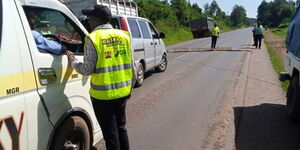Road carnage in Kenya has been on a worrying upward trend over the past two months, with enforcement agencies scrambling to implement measures that could stem the tide of casualties and injuries. Despite these efforts, the battle for safer roads continues to be undermined—not just by limited enforcement capacity but also by the widespread ignorance or outright disregard for traffic laws among some road users.
This growing crisis has put a spotlight on the long-distance trucking sector and other drivers where compliance with key provisions of the Traffic Act remains inconsistent, raising fresh questions about accountability, fatigue, vehicle safety, and the effectiveness of regulatory oversight.
This article delves into the critical aspects of the Traffic Act and related regulations developed by the National Transport and Safety Authority (NTSA) to help govern the conduct of road users.
Long Distance Truck Drivers
According to the National Transport and Safety Authority (Operation of Commercial Service Vehicles) Regulations, 2024, all long-distance truck operators must ensure that the commercial service vehicle is always in a proper and fit mechanical condition for the safe operation of the vehicle and shall keep a maintenance record for each of the commercial service vehicles for a minimum period of two years.
NTSA also mandates that long-distance truck drivers and PSVs do not operate for more than eight hours as mandated by the Traffic Act (Cap. 403). If the vehicle is to operate for more than the stipulated hours, then the parent companies are required to employ two drivers for the journey.
Operators are further required to submit a preliminary report of any road carnage that results in a casualties to the NTSA within 24 hours of the occurrence of the carnage that shall include at a minimum the driver details, vehicle registration details, maintenance record of the vehicle and the circumstances, if known, that led to the incident.
Additionally, vehicle owners and operators are expected to maintain the vehicle in proper and fit mechanical condition for safe operation. They are thus expected to keep maintenance records for each of their vehicles for a minimum period of two years.
PSVs and Commercial Service Vehicles
NTSA is likely to apprehend you if your vehicle lacks a telematics system—technology that combines telecommunications and informatics to remotely monitor and manage vehicles. Using GPS, sensors, and other tools, the system collects and transmits data on a vehicle’s location, speed, and performance to a central server or cloud platform. This information is crucial for purposes such as fleet management, safety monitoring, and insurance tracking.
Public Service Vehicles (PSVs) are required to be fitted with third-party insurance, speed limiters, and retro-reflective contour markings. These markings are specialised reflective strips, at least two inches wide, placed along the edges of a vehicle to outline its shape and enhance visibility—especially at night or in low-light conditions. The reflectors must meet standards set by the Kenya Bureau of Standards (KEBS) to ensure they effectively improve road safety by making vehicles more noticeable to other road users.
Commercial vehicles and trailers must display, in clear English lettering at least one inch high on the right side, the owner's name and address, the tare weight, and the authorized maximum carrying weight, failure to which you might land on the bad side of the law.
Loading Commercial Vehicles
Any cargo transported by a heavy commercial vehicle must be securely contained, covered, and immobilised to prevent it from leaking, spilling, blowing off, or falling from the vehicle. Additionally, loads like sand, gravel, waste, or scrap metal must be covered with materials like tarpaulin or wire mesh and securely fastened to prevent separation from the vehicle.
A commercial service vehicle's load must not endanger other road users, cause damage to roads or structures, obstruct the driver's view, or obscure the vehicle's lights, reflectors, or registration plate, according to the NTSA.
Failure to comply with the provisions might lead to suspension of the driver's and company's license after the authority has notified the responsible individuals.
Additionally, such parties might be subjected to a fine of Ksh20,000 or a jail term of six months.












